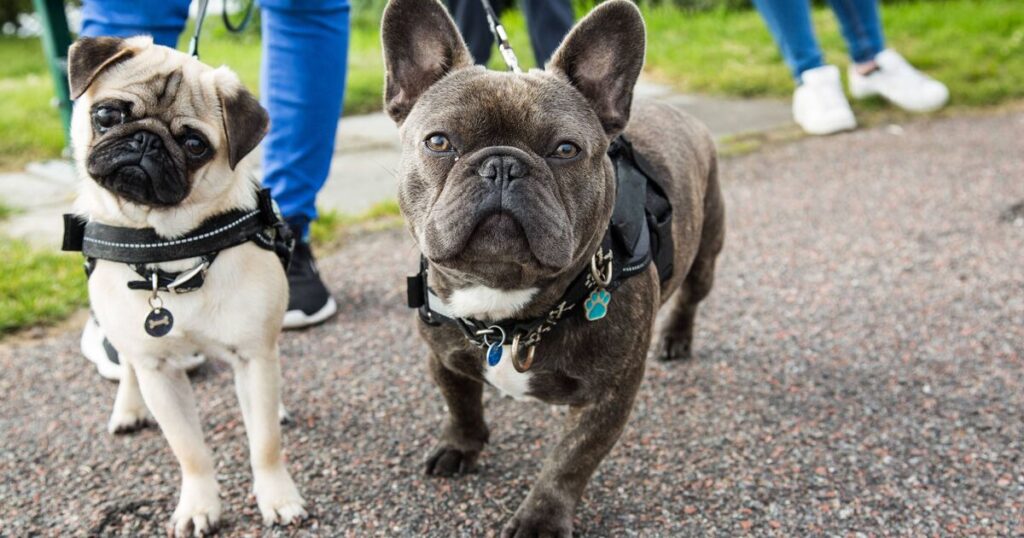
A top veterinarian has issued an urgent warning about the dangers of heatstroke in dogs, which pose deadly consequences if not addressed. Dr Hillary Pearce, a vet working with Hills Pets Nutrition, has highlighted the grave risks of heatstroke, labelling it as a life-threatening emergency warranting immediate treatment.
“Excessive panting and restlessness are early signs of heatstroke,” she cautions, noting that affected dogs may seem panicked and exhibit severe drooling. “Eventually, if left in this state they will collapse and can very quickly die.” Should your dog exhibit uncontrollable panting or show signs of agitation and restlessness, taking prompt action is crucial – starting with the use of cold water.
“It is absolutely imperative that your dog is cooled down as quickly as [possible],” instructs Dr Pearce. The quickest and most effective cooling techniques include immersing them in cold water or draping them with cold, wet towels.
Once the initial cooling steps have been taken, it’s critical to transport your pet to a vet without delay for additional care such as fluid therapy and body temperature regulation.
These vital steps can be the deciding factor between life and death when reacting to the initial signs.
Dogs with flat faces, such as bulldogs and pugs, known as Brachycephalic breeds, are at an even greater risk and are more prone to overheating.
“Brachycephalic dogs will start panting at much lower temperatures than normal dogs,” Dr Pearce warns.
For these susceptible breeds, even brief exposure to sunlight during walks can pose serious risks, making it paramount to time their exercise for the cooler periods of the day.
Steer clear of high-energy activities such as fetch or running, which can stop your dog from setting its own pace. Opt for shaded routes instead, letting your dog explore at a natural, comfortable pace.
Lastly, be mindful of hidden hazards, particularly scorching pavements and parked vehicles – two leading causes of summer-related dog fatalities.
“If the ground is too hot for your hand, it’s too hot for your dog’s paws,” cautions Dr Pearce. She also advises owners to never leave their dogs in a vehicle, even with the windows slightly open, as the internal temperature can escalate rapidly.
Cooling mats, drawn blinds, and chilled water bowls can help keep dogs comfortable indoors without the need for air conditioning.
With considerate care and swift action, owners can safeguard their pets and ensure a safe and enjoyable spring and summer.
Once the initial cooling steps have been taken, it’s critical to transport your pet to a vet without delay for additional care such as fluid therapy and body temperature regulation.
These vital steps can be the deciding factor between life and death when reacting to the initial signs.
Dogs with flat faces, such as bulldogs and pugs, known as Brachycephalic breeds, are at an even greater risk and are more prone to overheating.
“Brachycephalic dogs will start panting at much lower temperatures than normal dogs,” Dr Pearce warns.
For these susceptible breeds, even brief exposure to sunlight during walks can pose serious risks, making it paramount to time their exercise for the cooler periods of the day.
Steer clear of high-energy activities such as fetch or running, which can stop your dog from setting its own pace. Opt for shaded routes instead, letting your dog explore at a natural, comfortable pace.
Lastly, be mindful of hidden hazards, particularly scorching pavements and parked vehicles – two leading causes of summer-related dog fatalities.
“If the ground is too hot for your hand, it’s too hot for your dog’s paws,” cautions Dr Pearce. She also advises owners to never leave their dogs in a vehicle, even with the windows slightly open, as the internal temperature can escalate rapidly.
Cooling mats, drawn blinds, and chilled water bowls can help keep dogs comfortable indoors without the need for air conditioning.
With considerate care and swift action, owners can safeguard their pets and ensure a safe and enjoyable spring and summer.
 Latest World Breaking News Online News Portal
Latest World Breaking News Online News Portal






